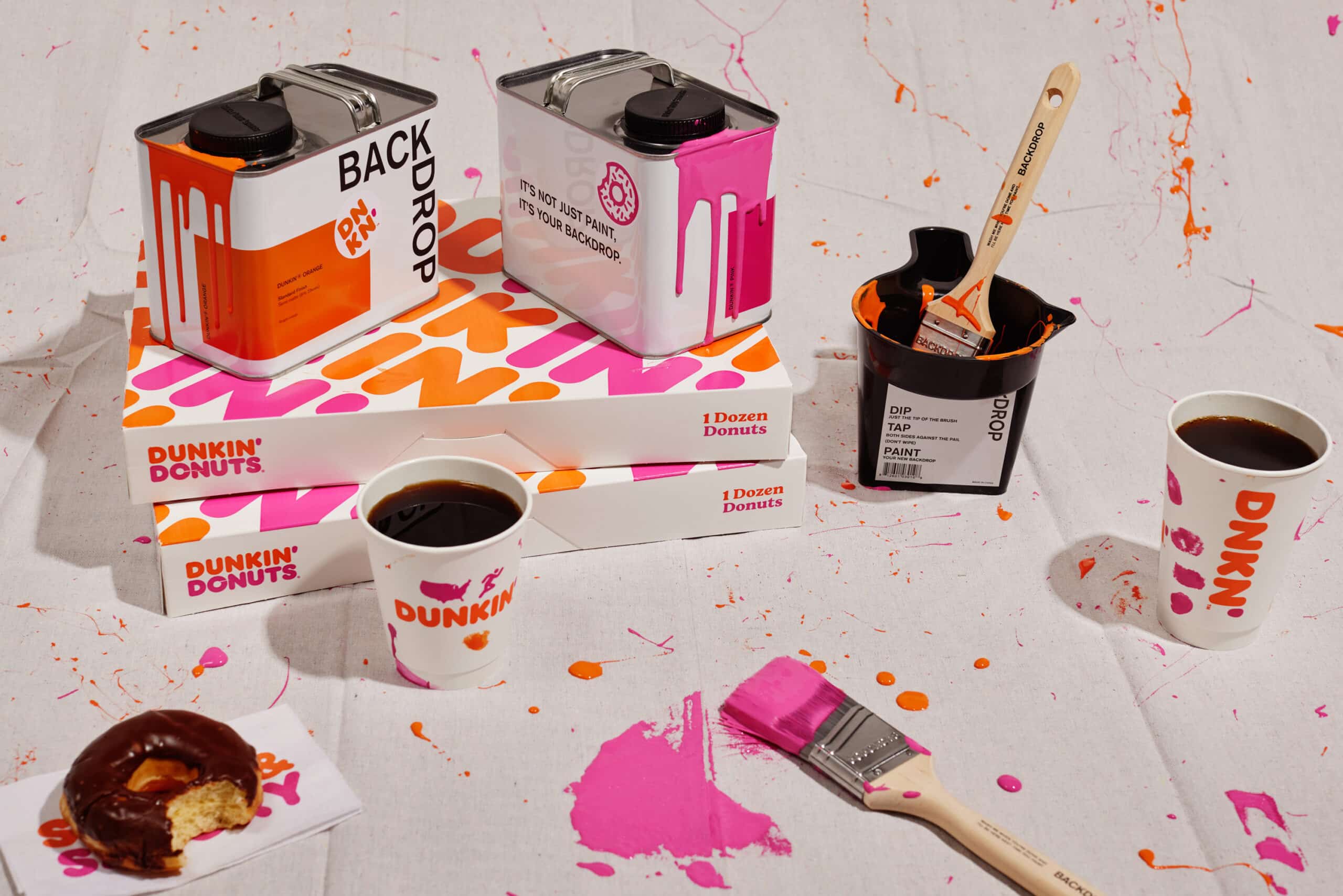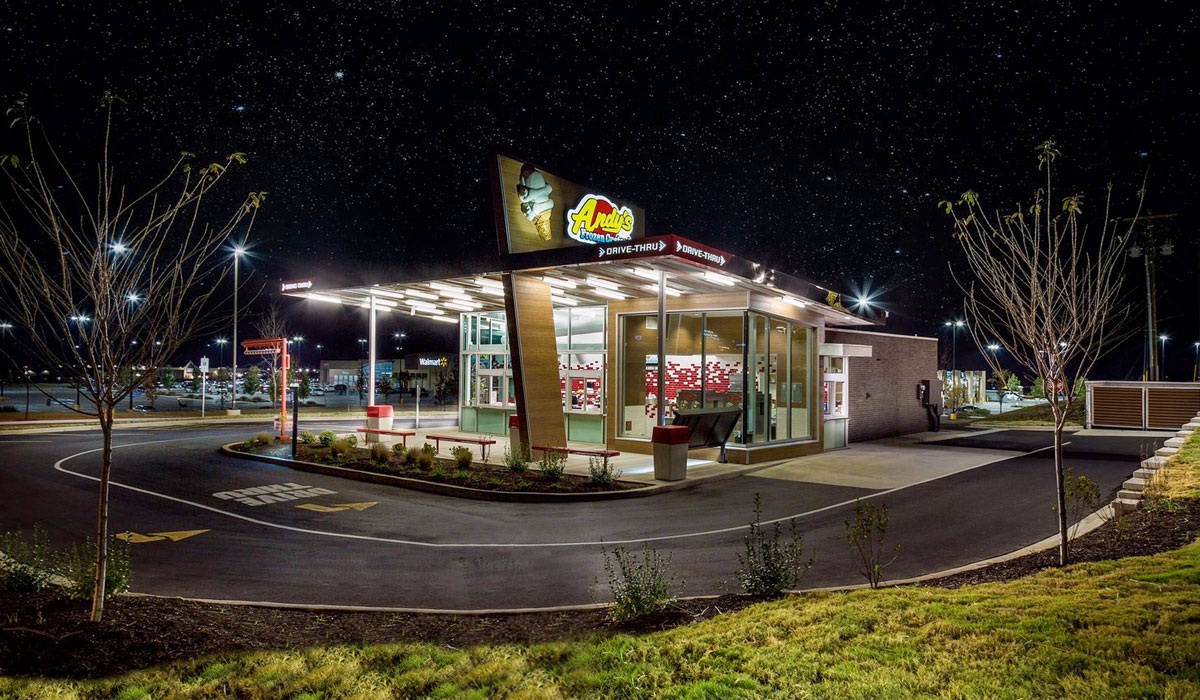When the first Andy’s Frozen Custard opened in 1986, there was never a thought of building a national chain. It was a modest concept that provided a living for the Kuntz family. John and Carol Kuntz opened Andy’s in the small town of Osage Beach, Missouri, and named it for their son.
Thirty-five years later and 100 plus units in, Andy’s just reported sales records at $1.39 million per unit. “When you went to duplicate that, it became more challenging,” CEO Andy Kuntz says of scaling the homegrown chain, “but I think it was the right way to do it. Ultimately, I think it delivered a better product.”
At the original mom-and-pop business, Kuntz and his high school sweetheart (and now wife) Dana worked hard through the business’s expansion in the 1990s. By the early 2000s, Andy’s started franchising, which ignited growth across multiple states.
Working 100 hours a week open to close, Andy and Dana would take minimal breaks, sometimes going to the office, putting two chairs together, and napping for 30 minutes before the evening rush.
“That was largely for one reason mainly—we couldn’t afford failure,” Kuntz says.
Working so many hours in the heart of operations, Kuntz says they understood that side of the business as he assumed leadership, and they continued to uphold his family’s values as well. Along the way, Kuntz convinced his father franchising made sense.
“It’s kind of like a relay race and you hand off the baton and you hope the next guy can run faster than the first guy,” Kuntz says.
At times, it’s easy to get stuck in the stress of running a few restaurants day-to-day, and growing even more may seem out of reach. But franchising opened the doors to becoming a national brand for Andy’s. And sales matched the level of success Andy’s found in unit expansion. In 2020, Andy’s saw $124.39 million in sales, up 16.4 percent from the prior year. This defied other restaurants’ pandemic performances, but during the troubling year, guests were attracted to Andy’s comfort and safety, Kuntz says.
[image source_ID=”130815″]
“It’s an uncertain time,” Kuntz says. “We are certainly a comfort product, and you grab your dog and your kids and you go to Andy’s, and you sit on the curb, and you have a concrete, a sundae, and it feels good.”
The past few years witnessed Andy’s reach a tipping point in sales. Perhaps both because of the comfort consumers crave during scary times and the appeal of a drive-thru during a pandemic, Andy’s thrived. The brand improved service times and showed customers they took safety seriously.
In the next year, Andy’s plots 20 percent unit growth in the Southeast with a special focus on the Florida market as a way to reduce the business’s seasonality.
“Twenty percent is a comfortable number where we feel like we can continue to grow, test our teams, learn from what we’re doing right and learn from what we’re doing wrong and avoid any bigger problems,” Kuntz says.
Throughout Andy’s growth, the brand continues to prioritize finding the right fit in franchisees and providing them the tools and infrastructure to be successful.
“These guys don’t want to sit on their laurels,” Kuntz says. “They want to continue to grow. They want to build this brand and expose it to as many people as they can. We’re constantly pushing and wanting to grow not only the brand, but each one as individual stores and sales.”
Kuntz say the company looks for franchisees to bring on a minimum of five stores as the brand prefers to have only one or two franchisees in one market. It’s a different mindset to grow a market rather than grow a store, and it requires looking toward the future.
Learning from the past is necessary, too. Over the past two years, Andy’s had to navigate intensified pressure from the labor shortage that impacted restaurants across the country. But for 35 years in the business, Kuntz says hiring the right people has been the No. 1 thing they work on most. As a seasonal business, hiring has long had highs and lows for the family brand. Still, Andy’s has always been good at attracting employees because of its family environment and culture, which can be rare in the quick-service segment, Kuntz says.
“We’re all here to serve them and make sure that they have the tools they need to be successful,” Kuntz says. “But, that said, the current environment is rough.”
From day one to now, 100 plus units and 35 years later, Andy’s remains focused on selling the best product, the best treats, for customers, Kuntz says.
“At the end of the day, people are coming to our stores to buy a treat,” Kuntz says. “And it needs to be the best treat you can buy in the market period, and that’s what we hang our hat on.”








